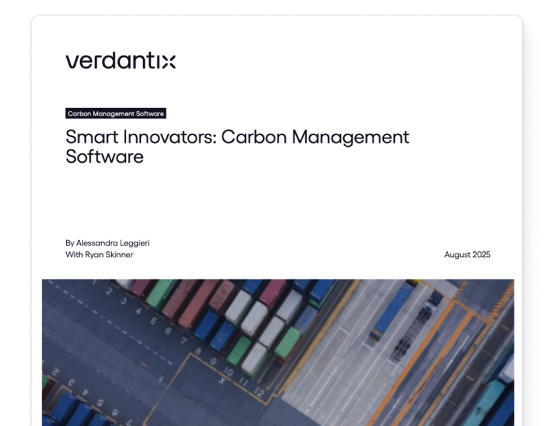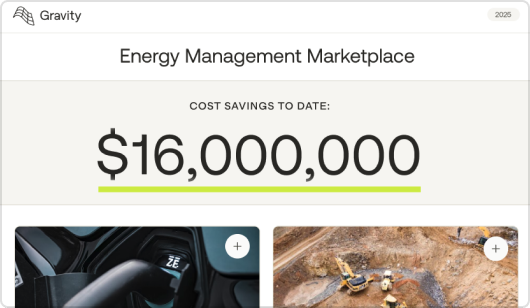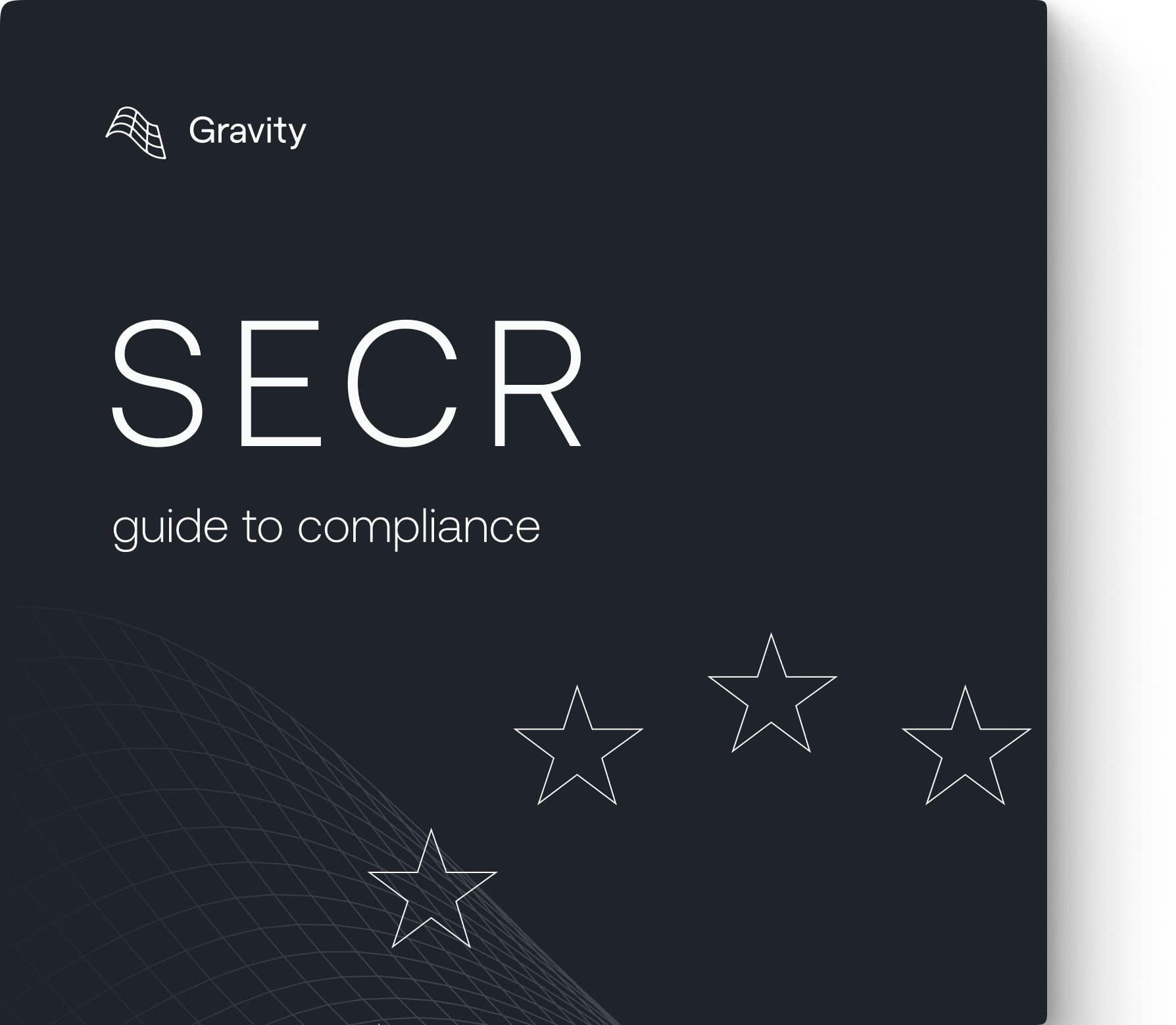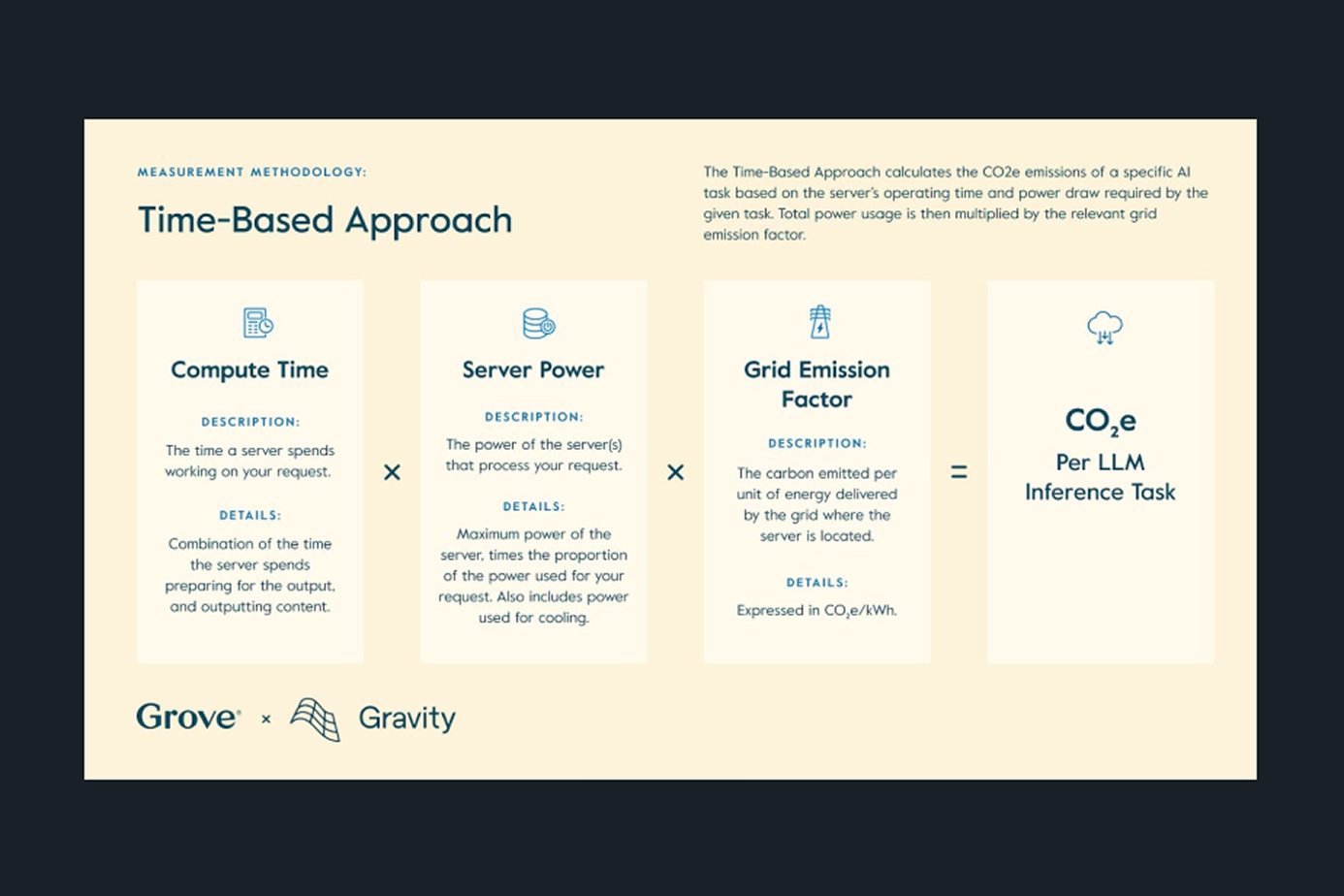See why customers are switching to Gravity
Choosing the best climate-related disclosures for your business
Amid rising private sector action on sustainability, a striking trend has emerged: the rapid growth of voluntary climate-related disclosures.

A Growing Trend: Voluntary Climate-Related Disclosures
Amid rising private sector action on sustainability, a striking trend has emerged: the rapid growth of voluntary climate-related disclosures.
In 2021, more than 13,000 companies representing 64% of global market capitalization published climate disclosures via CDP, the leading repository of climate disclosures.
These climate disclosures typically include quantitative data about a company’s carbon footprint and qualitative information about their approach to climate-related risks. The disclosures are typically directed to stakeholders such as customers, suppliers, investors, and shareholders.
How to Choose the Right Climate Disclosure Framework for your Business?
If you’re new to the space, it can be daunting to manage climate-related risks and even more confusing to pick the right voluntary climate related disclosure. This guide helps you make sense of the acronyms and explains the most common climate disclosure frameworks. We also explain why companies disclose climate risk, what you need to disclose in order to comply with certain frameworks, and how to participate in climate disclosure.
Why Are There So Many Climate-Related Disclosure Frameworks?
First things first, why are there so many frameworks for disclosing climate risk? Wouldn’t it be easier if we could standardize climate-related disclosures? Not long ago, even leading companies only mentioned climate change and greenhouse gas emissions in a few pages of an annual report or corporate social responsibility (CSR) update. As disclosure became more common, it became important to be able to compare apples to apples, so several NGOs and industry bodies developed guidelines for how companies should report sustainability information.
Since the space is still voluntary in the US, there isn’t one single source of truth. We are starting to see some consolidation, so we expect this list to get simpler over time. There’s also a proposed rule from the US Securities and Exchange Commission (SEC) that might make climate risk disclosure mandatory for public companies. In the meantime, the current climate disclosure frameworks primarily vary based on the sectors of the organization and the intended audience of the disclosure. Keep reading for explanations of the most common voluntary climate disclosure frameworks.
Task Force on Climate-Related Financial Disclosures (TCFD)

The Task Force on Climate-Related Financial Disclosures framework was released in 2017 by the Financial Stability Board, a group of global finance ministers. The framework stems from the observation that climate change will bring both risks and opportunities to companies, and that investors need a better picture of how climate affects individual companies so they can make informed investments. The TCFD’s goal is to help companies understand their climate-related risks and exposure and to help companies disclose this financially relevant information to external stakeholders.
The TCFD isn’t a regulatory body or a ratings agency; it doesn’t require, collect, or judge company disclosures. The TCFD is effectively an NGO that offers guidelines for what a best-in-class climate disclosure would look like. These recommendations comprise four thematic pillars:
- Governance – Companies should disclose where climate responsibility falls in the organizational chart, if anywhere. Does the Board own it? Is management involved?
- Strategy – Does the company have an approach to dealing with climate-related risks and opportunities? How does the company’s understanding of climate issues relate to the overall financial strategy?
- Risk Management – Climate change and the green economic transition present various forms of risk to companies – from extreme weather exposure to supply-chain vulnerabilities, shifting markets, and more. How does the company identify and manage climate risks?
- Metrics and Targets – Companies are encouraged to disclose their Scopes 1-3 emissions, as well as any reduction targets set and progress made.
Although only five years old, the TCFD has quickly become the dominant corporate climate disclosure standard, with companies like Tractor Supply Co., 3M, and PepsiCo all following it. It’s worth noting, though, that companies rarely report on every aspect outlined in the framework. Last year, only 50% of TCFD disclosures covered more than two of the recommended pillars, illustrating that climate risk disclosure is a continual process companies work to improve year-over-year.
Carbon Disclosure Project (CDP)

The TCFD provides guidance on the content of climate disclosures – what information companies should include – but it’s indifferent about where or when companies disclose. The most common guidance on those questions comes from the CDP.
The CDP is essentially a repository or library of climate disclosures. Every year, they open a submission portal for companies to complete a set of questionnaires detailing how they approach climate issues. Most companies then allow the CDP to make these disclosures available to the public on its website, although companies can choose to keep them private if they wish.
The CDP also publishes an annual leaderboard of corporate climate disclosures, based on the comprehensiveness of information companies provide. Companies with particularly comprehensive responses include Infosys, Lenovo, and Diageo.
The CDP has worked over the past few years to harmonize its structure with TCFD standards, so the questionnaire largely tracks the four thematic areas listed above. In other words, although the CDP doesn’t prescribe the content of a climate disclosure like the TCFD does, it is often the next step in companies’ disclosure journeys. When companies disclose through the CDP, they are working to satisfy the TCFD recommendations as well.
Partnership for Carbon Accounting Financials (PCAF)

While every carbon footprint is unique, financial services organizations have historically experienced particular challenges in classifying and measuring their GHG emissions.
Organizations such as banks and asset managers and owners produce GHG emissions themselves, but they’re also responsible for a portion of the emissions of the portfolio companies they own or lend to. And since these “financed emissions” can be up to 700 times greater than the emissions of the financial institution itself, it’s important to understand how to account for them.
PCAF was created by industry stakeholders to address this challenge. It provides a consistent set of guidelines for financial institutions to account for their financed emissions, smoothing the way for apples-to-apples comparisons across organizations. PCAF has proven influential, with over 280 financial institutions signed on, representing financed assets of over $75 trillion; signatories include large financial players such as Morgan Stanley and Oaktree Capital Management, but also smaller ones such as M&T Bank Corp.
The PCAF guidelines are specific to individual asset classes (e.g., loans, project finance, etc.), but they share a common rough structure. First, a financial institution measures the GHG emissions of its portfolio companies. They then multiply those GHG emissions by a proportion representing the financial institution’s responsibility over these companies (e.g., a PE firm’s equity stake in a portfolio company). Finally, they include this number as part of their Scope 3 emissions.
PCAF is different in kind from the TCFD (a framework for organizing a company’s climate disclosure) and CDP (a place to publish such disclosures). PCAF sets out a methodology for financial institutions to measure their carbon footprint in the first place – the step before those prior standards become relevant. As such, it’s an amendment to the GHG Protocol, providing harmonization across the carbon accounting landscape.
Sustainability Accounting Standards Board (SASB)

Released in 2018, SASB provides sector-specific disclosure recommendations for specific industries across the economy, such as consumer goods, food & beverage, technology, transportation, and more.
Similar to the TCFD, SASB asks companies to disclose general metrics, like your corporate GHG emissions, but then it provides more detailed guidance depending on your sector. For example, they ask construction services companies to think about building life cycle impacts and the implications of using different design materials.
This highlights a potential added benefit of reporting in line with SASB (and, moving forward, with ISSB): the process of thinking through the standards’ recommended disclosures can help companies identify which environmental issues are most relevant for their business. This, in turn, can help companies prioritize what to tackle first in their sustainability strategy. Companies disclosing in line with SASB include Polaris Industries, Abbott Laboratories, and Boeing.
The SASB standards differ from the TCFD standards because they cover a broader range of issues beyond climate. For example, they also ask companies to disclose information on social and human capital and leadership. This kind of information is sometimes requested by investors.
International Sustainability Standards Board (ISSB)

The proliferation of sustainability disclosure standards and frameworks in recent years has left some businesses and investors frustrated. They want a common reporting rubric to remove guesswork for companies and to allow investors to make decisions based on more comparable information.
The International Sustainability Standards Board was created to address this need. The ISSB’s stated goal is to create a “comprehensive global baseline of sustainability disclosures” that can apply to all companies.
These standards are still in draft form, with likely publication near the end of 2022. But the ISSB has made clear that they do not intend to reinvent the wheel, but to build on other frameworks. In particular, ISSB standards will “build upon the recommendations of the Task Force on Climate-Related Financial Disclosures (TCFD) and incorporate industry-based disclosure requirements derived from SASB Standards.” (In fact, as of August 2022, the organization that produced the SASB standards has merged with ISSB’s own parent organization.)
Over the coming years, we expect ISSB standards to play an influential role in guiding the development of mandatory sustainability disclosure requirements set by regulators. The good news is that any work companies have done to prepare SASB or TCFD disclosures will help in the preparation of ISSB disclosures when they are finalized.
What All Climate Disclosure Frameworks Have in Common: Rigorous Carbon Accounting
While there are a lot of acronyms and many small differences to keep track of, at a basic level, all climate disclosures generally consist of some qualitative information about how the company approaches climate risks and the transition to a greener economy. The other common denominator across all climate disclosure frameworks is rigorous quantitative measurement of greenhouse gas emissions via carbon accounting. And for this, there is one last framework that’s relevant: the GHG Protocol.
The GHG Protocol is virtually universally recognized as the gold standard for how to measure and classify GHG emissions. It emerged in the late 1990s as a joint initiative of the World Resources Institute and the World Business Council for Sustainable Development. Because the goal was to prescribe a carbon accounting methodology that would be as broadly applicable as possible, the GHG Protocol’s development process included participation of some of the world’s leading companies, including Ford Motor Company, Dow, General Electric, and others. It is explicitly referred to as the standard of choice for measuring GHG emissions in the frameworks listed above.
The First Step in Disclosing Your Business' Climate Risks
As organizations contemplate the next steps in their sustainability journeys, many are turning to voluntary climate disclosures. Reporting on your carbon footprint along with business-relevant climate risks and opportunities can help you differentiate your brand, win new business, and prepare for potential required disclosures.
Gravity helps businesses navigate the often confusing disclosure landscape, whether you’ve been disclosing climate-related information for years or you’re wondering when’s the best time to get started. We can help you decide when to prioritize climate disclosures, select which framework best aligns with your business objectives, and understand the latest news as this landscape evolves. Reach out to see how.
Download the report to learn more
VerdantixTM Smart Innovators: Carbon Management Software

Curious about Gravity's Energy Management Marketplace?
Book a demo to learn more

Curious about Gravity's Europe expansion?
Book a demo to learn more
.png)
Ready to get off the merry-go-round?
Book a demo to learn more.

Curious about Gravity's CDP accreditation?
Book a demo to learn more.

California's Carbon Reporting Rule
Watch our webinar to prepare for California's new climate regulation

Curious about these features?
Book a demo to learn more.

Be prepared for SECR
Meet with our team, walk through the steps you'll need to take to report, and start a free trial to see how Gravity can help you report with greater speed and accuracy.

See the platform in action
Watch a short video to see why leaders like WM, TTI, and WAF have chosen to work with Gravity to simplify carbon accounting and drive business impact.

Meet with our team, walk through the steps you'll need to take to report, and start a free trial to see how Gravity can help you report with greater speed and accuracy.

Cut down reporting time by 70%
Request a demo to see these features in action and learn how they can save hours of manpower in your next reporting cycle.
Looking to Uplevel Your Sustainability Programs in 2025?
Reach out for a personalized meeting with our climate experts to find opportunities to save time on regulatory compliance, simplify internal communications, and execute projects that deliver real business impact.
Find energy efficiency projects that deliver value
Learn how to reduce energy costs and emissions.

Be prepared for the CSRD
Get in touch to find out how your company should prepare for the CSRD amidst changes to the regulation.




%20(1).png)